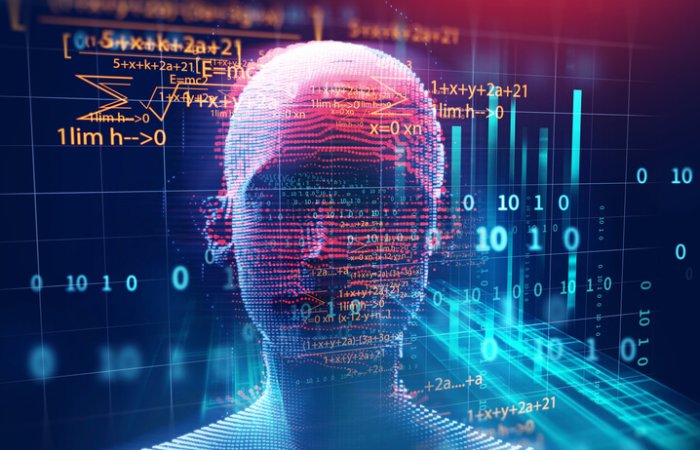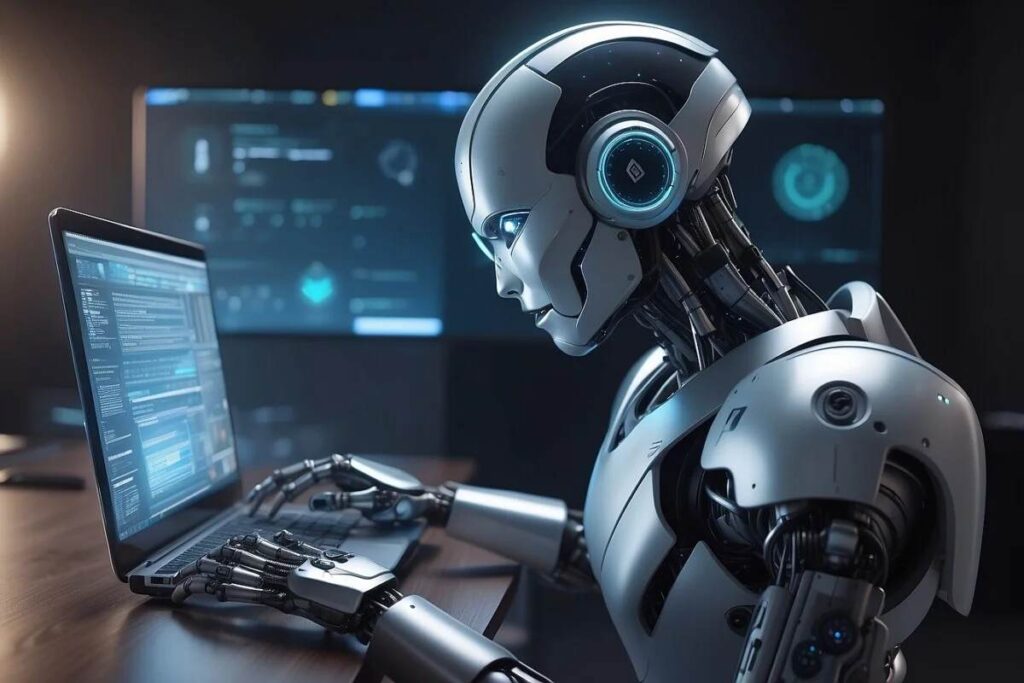In today’s digital era, most face difficult situations due to the risks associated with technology Future of AI in Cybersecurity. Moreover, as the level and frequency of various cyber threats continue to increase, it is no surprise that most organizations are now using artificial intelligence (AI) and automation to strengthen their security systems.
AI is known to be incredibly good at analyzing existing risks and taking countermeasures. This raises an important question: can the traditional way of doing things in cybersecurity cease to exist with the help of automation?
Defining Artificial Intelligence in Cyber Security

Artificial Intelligence refers to a type of computer or machine that mimics the learning capabilities of humans. Whenever a potential cybersecurity threat arises at this level, AI launches big data technologies and searches for such information that means changes in everyday life. This is also true in cyberspace, where security training is complemented by the ability to learn algorithms on the fly.
AI can be used to better understand detection, response, and prevention strategies in the cybersecurity space. For example, network-based AI systems can be used to analyze network traffic to identify any suspicious activity that would presumably go unnoticed by analysts. Rapid automated measures can also help contain the flood by minimizing damage Future of AI in Cybersecurity.
The Influence of Automation Processes
When managing day-to-day operations in a cybersecurity environment, automation is one of the key components to improve productivity. This is because processes such as log analysis and vulnerability scanning or incident response can be performed efficiently without any effort, minimizing the burden on security teams and increasing efficiency. The benefit of automating aspects of cybersecurity is that it allows professionals to engage in pretty complex areas that require human judgment and expertise.
In addition, the problem of handling numerous alerts generated by security measures can also be solved with automation. For example, many security info and event management (SIEM) solutions generate many alerts, most of which may be false. Some systems can handle such alerts and escalate those requiring human intervention Future of AI in Cybersecurity.
The Strengths of Human Expertise Future of AI in Cybersecurity

Human warfare is not going away anytime soon because dangerous technologies have improved Future of AI in Cybersecurity. They are:
Contextual understanding Future of AI in Cybersecurity
The situational awareness that machines cannot. For example, a professional will be able to assess the likely level of disruption that such a threat could cause, especially to the organization’s core business, identify the reasons why such an attack might occur, and the inherent threats to the organization itself. This understanding of context helps them take actions that systems may not appreciate.
Critical thinking and adaptability Future of AI in Cybersecurity
General approaches to understanding a problem and developing ways to combat it are not the methods practiced in cybersecurity. Each organization has a unique set of assets, risks, and threats. This is where human analysts differ; they are creative and critical in their thinking and can make decisions specific to their environment. They think outside the box and develop innovative solutions to new threats that even systems may be unable to handle.
Emotional Intelligence
The human side of cybersecurity is also critical. Cybersecurity professionals work with various business units and other teams to manage stakeholders and their risks while dealing with people. This is important for developing a security culture within an organization and security policies that do not conflict with business processes. Additionally, as organizations build their digital brand, influencer marketing becomes relevant in educating the general public on cybersecurity best practices, raising awareness that strengthens internal security efforts.
Limitations in AI and Automation
However, it must be acknowledged that their shortcomings make human input indispensable Future of AI in Cybersecurity.
Data Quality and Bias
Suffice it to say that AI tools have enormous data requirements to train and operate. If the data that underpins the training of such systems is partial or inaccurate, the system may be incorrect. That is why humans must step in and ensure that these tools are fed with diverse data to reduce the risk of bias and improve the quality of forensic findings.
Diverse Threats Future of AI in Cybersecurity
Cybersecurity risks are undoubtedly becoming more complex, and strategies are mainly being used to target non-automated elements of an organization. An example is advanced persistent threats (APTs), which rely on social engineering that only humans can recognize. This is another area where machines cannot help, and humans must be involved.
Sociological Aspects
AI in business and cybersecurity poses moral challenges related to privacy, monitoring, and abuse. Integrating business intelligence tools can improve data analysis and decision-making, but it is essential to maintain a strong ethical foundation for tackling such complex issues. While AI offers significant advances, it is best to leave it to humans to ensure compliance with regulatory and ethical considerations related to cybersecurity.
The Future of Cybersecurity: Towards a Joint Effort

Instead, AI systems and automation should not be considered substitutes but complements and aids to human work. The coexistence of humans and AI systems will drive future success in the Future of AI in Cybersecurity. There is always room to improve an organization’s security infrastructure through collaboration between the two.
Increase decision making
Analysts can use AI capabilities to extract actionable insights from data analysis. For example, AI can help professionals recognize cyber threat trends that a human might otherwise miss, allowing professionals to make better decisions. This increase in decision-making can improve detection and response capabilities.
Continuous learning
Cybersecurity is an ever-changing field that requires a lot of learning. Human experts help develop AI systems by providing information such as expert assessment of threat levels and incident response Future of AI in Cybersecurity.
Custom NLP solutions can be particularly effective in refining these models by providing detailed analysis of language inputs, allowing the AI to respond more effectively to complex situations. This learning process, through
feedback over time, makes the AI model more accurate and will enable it to cope with changing threats over the years.
Improved Incident Response Future of AI in Cybersecurity
AI can help reduce response times in a cyber incident by automating some of the initial containment measures. However, crisis response is always led by human analysts who lead crisis containment and response efforts, conduct any necessary forensic examinations, and make long-term decisions. Just as keeping equipment clean is
essential for optimal performance across various tasks, having a reliable bong cleaning kit can help ensure that the tools used in a crisis remain practical and ready to use.
Conclusion
In summary, while advances in AI and automation have changed the game in cybersecurity, they have not made
the human element of cybersecurity obsolete Future of AI in Cybersecurity. Human strengths such as context,
cognitive barriers, and emotional intelligence are critical in cybersecurity, which is characterized by multiple threats and challenges. Combining AI technologies with human intelligence in a single task will be the secret to
creating robust cybercrime defenses in the digital age. In this way, organizations can protect themselves from unprecedented ways in which cybercrimes are committed against victims.


